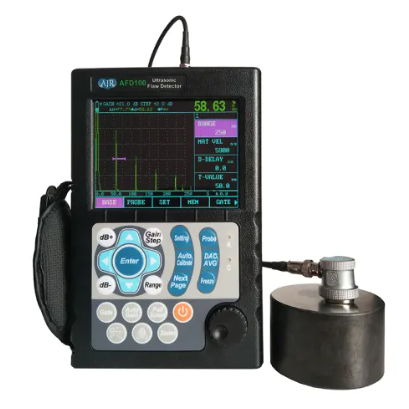An Introduction to Ultrasonic Flaw Detection
Ultrasonic flaw detection is a non-destructive testing technique widely used across various industries to inspect materials and detect defects or discontinuities that may compromise structural integrity or performance.
Principles of Ultrasonic Flaw Detection: Ultrasonic flaw detection utilizes high-frequency sound waves, typically in the range of 0.5 to 25 MHz, to inspect materials for internal flaws or defects. The process involves transmitting ultrasonic waves into the material using a transducer, which generates sound waves through piezoelectric or magnetostrictive effects. These waves travel through the material and are reflected or attenuated at interfaces or defects within the material. By analyzing the time of flight, amplitude, and other characteristics of the reflected waves, technicians can identify and characterize defects such as cracks, voids, inclusions, and delaminations.
Components of an Ultrasonic Flaw Detection System: An ultrasonic flaw detection system typically consists of several key components, including:
Transducer: Converts electrical energy into ultrasonic waves and vice versa.
Couplant: A gel or liquid medium that facilitates the transmission of ultrasonic waves between the transducer and the material being inspected.
Pulse-Echo Instrument: Generates and receives ultrasonic pulses, analyzes the received signals, and displays them on a screen.
Display Unit: Provides a visual representation of the ultrasonic signals, allowing technicians to interpret and analyze the data in real-time.
Recording and Analysis Software: Allows for the storage, playback, and analysis of ultrasonic signals for further inspection and documentation.
Applications of Ultrasonic Flaw Detection: Ultrasonic flaw detection is utilized across a wide range of industries and applications, including:
Weld Inspection: Detects defects such as cracks, porosity, lack of fusion, and incomplete penetration in welded joints.
Aerospace: Inspects critical components such as turbine blades, engine parts, and aircraft structures for hidden defects that could compromise safety.
Manufacturing: Ensures the quality and integrity of manufactured components such as pipes, tubes, castings, and forgings.
Automotive: Detects defects in automotive components such as engine blocks, cylinder heads, and suspension parts to ensure reliability and performance.
Petrochemical: Inspects storage tanks, pipelines, and pressure vessels for corrosion, erosion, and other defects that could lead to leaks or failures.
Advantages of Ultrasonic Flaw Detection: Ultrasonic flaw detection offers several advantages over other non-destructive testing methods, including:
High Sensitivity: Capable of detecting small defects and discontinuities deep within the material.
Versatility: Suitable for a wide range of materials, including metals, plastics, ceramics, composites, and more.
Real-Time Inspection: Provides instant feedback on the condition of the material, allowing for rapid decision-making and corrective actions.
Non-Destructive: Does not alter or damage the material being inspected, making it suitable for quality control and safety-critical applications.
Quantitative Analysis: Allows for the measurement and characterization of defects, enabling accurate assessment of material integrity and performance.
Ultrasonic flaw detection is a powerful and versatile non-destructive testing technique that plays a crucial role in ensuring the quality, safety, and reliability of engineered components and structures across various industries. By leveraging the principles of ultrasonic waves and advanced instrumentation, technicians can effectively detect and evaluate defects in materials, facilitating informed decision-making and preventive maintenance strategies.



